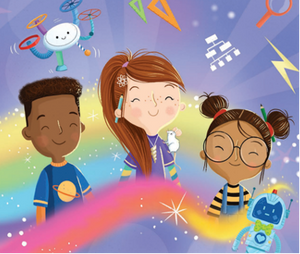Did you know that today (26th May) is National Paper Airplane Day? It’s celebrated every year to commemorate the simple aeronautical toy (the paper plane) that’s been fascinating children and adults across the globe for generations. We at Team QuestFriendz love this special day as it’s an opportunity to ditch the screens for some fun and fresh air, whilst developing our STEAM (Science, Technology, Engineering, Arts and Mathematics) skills.
So, today your children are on a very important mission. They are avionics engineers and their challenge is to design and create a plane that glides as far as possible. Just like avionics engineers, they will work on designing, building, testing, and controlling machines (paper planes) that fly (glide). This is going to exercise their trial and error and solution evaluation skills which are part of structured problem solving.


For this STEAM quest, children are free to use any materials that they find around the classroom or at home and are encouraged to be as creative as possible. If you’ve never made a paper plane before and need some inspiration, watch this helpful video here: http://bit.ly/MakePaperPlane
Step 1: Complete a sketch of the plane you’d like to create
A great way to start is by asking the children to sketch out some ideas for their plane on a piece of paper. Sketches can be simple or complex depending on their age. Starting with a very simple sketch helps to start from a basic and solid basis which is going to be their reference point. Later, the sketch can be improved and made more complex, for example, with the addition of wingtips. Wingtips are upward folds at the end of the wings, which can help your plane to achieve a smoother and straighter flight path.

Step 2: Explore and decide on your materials
Ask the children to think about the materials they’ll need to use for their planes. Get them thinking about different types of materials and how this might impact the design and performance of their planes. For example, they can use cardboard, parchment paper, aluminium foil, or glitter paper. You can ask the children what they think the result might be if they use a heavier paper (e.g. cardboard) versus a light paper (e.g. parchment paper). You can also ask where it is important to fold the material to have a more solid plane. For example, adding folds to the plane strengthens the structure of the plane. Thomas – can you be more specific? Where should the folds be added to strengthen the structure of the plane? TB: Let’s keep this open.
Step 3: Collect all the materials needed
Search out all the materials needed to build the planes with what you have available at home or in the classroom. Let the children determine what can be used and should not be used and why. It is important to let them fail (e.g. by using tissue paper) as it is part of the learning experience. In case of failure, ask them why it failed, what they think about it and what they could do differently for the next attempt.
Step 4: Create first prototypes
Prototypes are original forms of a design idea and are often used for testing and further design improvements. Prototypes vary from the shape of the plane, where to fold, how many times to fold, etc. The idea is that children create several different prototypes out of diverse materials (e.g. paper of diverse weights and textures like white printer paper vs. construction paper vs. parchment paper or carton or foil, etc.) and designs. During this phase children use trial and error to determine which materials, designs and sizes seem to work best.

Step 5: Competition time!
This is the fun bit! The children can now test their planes in a mini competition which can be judged by parents and siblings at home, or teachers and classmates at school – the official panel – who will record how far each plane has flown.
The winner is the child that’s plane that has flown the furthest. Bonus points can be awarded for creativity and design!
This challenge can be simplified or made more complex depending on the age of the child and their development level. The quest focuses on predicting behaviour via experimentation and developing a growth mindset via testing and improving the plane over and over to achieve better results. These are all skills that will help your children to develop a scientific mindset and better problem-solving skills whilst having lots of fun in the process!
At QuestFriendz we believe that starting STEM at an early age helps children to make important connections between everyday life and the STEM disciplines. If you’d like to try out some more of our fun STEM quests, just click here and let the fun begin!








